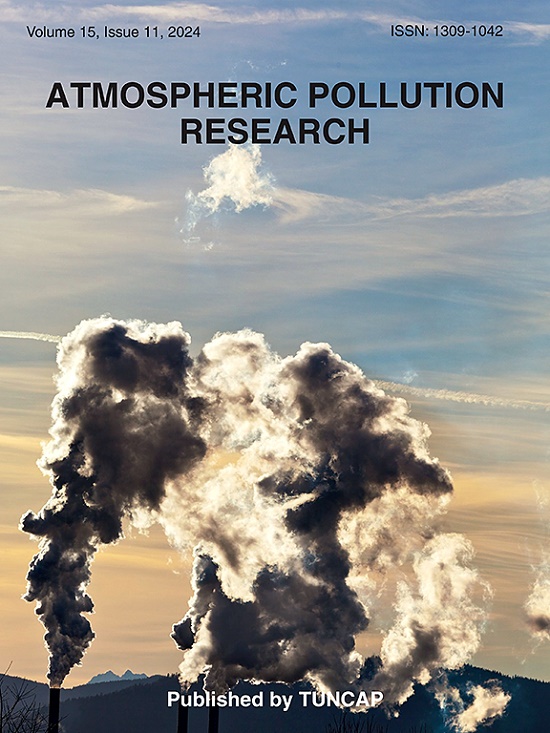Assessment of IoT low-cost sensor networks for long-term outdoor and indoor air quality monitoring: a case study in Dublin
IF 3.5
3区 环境科学与生态学
Q2 ENVIRONMENTAL SCIENCES
引用次数: 0
Abstract
This study provides a framework for Internet of Things based low-cost sensors (LCS) network implementation, using office environments in Dublin, Ireland, as a case study for long-term indoor air quality (IAQ) monitoring. It covers options and key decisions related to sensor technology, reporting systems and data management. Environmental and indoor data were collected from 1 June 2023 to 20 June 2024, using Smart Citizen Kit 2.1 and PurpleAir devices, and data retrieved from cloud-based data platforms for analysis. The standard deviation and coefficient of variation were calculated to evaluate intra-sensor precision. To improve data quality of LCS various correction models were tested, considering the impact of temperature and relative humidity. A multilinear model with additive relative humidity, using the piecewise regression, provided better performance (R2 > 0.7, RMSE <5 μg/m3) and accuracy (>0.88) for 24-h fine particulate matter (PM2.5) and inhalable particulate matter (PM10). This study bridges the data gap by incorporating multi-brand LCS network for further application in outdoor supplementary and IAQ reporting. The results showed corrected indoor PM2.5 data in offices complies with WHO air quality guidelines, and carbon dioxide (CO2) levels in naturally ventilated conditions remained below 800 ppm. Additionally, diurnal patterns reveal elevated levels of CO2 and total volatile organic compounds during core office hours, while the contrasting patterns for PM2.5 suggest outdoor infiltration as the dominant source. This study demonstrates the potential of data-driven techniques for real-time IAQ monitoring and reporting, providing valuable insights to promote healthier IAQ for occupants.
评估物联网低成本传感器网络用于长期室外和室内空气质量监测:都柏林的案例研究
本研究为基于物联网的低成本传感器(LCS)网络实施提供了一个框架,以爱尔兰都柏林的办公环境为例,作为长期室内空气质量(IAQ)监测的案例研究。它涵盖了与传感器技术、报告系统和数据管理相关的选项和关键决策。使用Smart Citizen Kit 2.1和PurpleAir设备,从2023年6月1日至2024年6月20日收集环境和室内数据,并从基于云的数据平台检索数据进行分析。计算标准偏差和变异系数以评估传感器内精度。为了提高LCS的数据质量,考虑温度和相对湿度的影响,测试了各种校正模型。采用分段回归的加性相对湿度的多线性模型提供了更好的性能(R2 >;24小时细颗粒物(PM2.5)和可吸入颗粒物(PM10)的测量精度(>0.88)。本研究通过整合多品牌LCS网络来弥补数据差距,进一步应用于户外补充和室内空气质量报告。结果显示,校正后的办公室室内PM2.5数据符合世卫组织空气质量准则,自然通风条件下的二氧化碳水平保持在百万分之800以下。此外,在核心办公时间,二氧化碳和总挥发性有机化合物的水平升高,而PM2.5的对比模式表明室外渗透是主要来源。这项研究展示了数据驱动技术在实时室内空气质量监测和报告方面的潜力,为促进居住者更健康的室内空气质量提供了有价值的见解。
本文章由计算机程序翻译,如有差异,请以英文原文为准。
求助全文
约1分钟内获得全文
求助全文
来源期刊

Atmospheric Pollution Research
ENVIRONMENTAL SCIENCES-
CiteScore
8.30
自引率
6.70%
发文量
256
审稿时长
36 days
期刊介绍:
Atmospheric Pollution Research (APR) is an international journal designed for the publication of articles on air pollution. Papers should present novel experimental results, theory and modeling of air pollution on local, regional, or global scales. Areas covered are research on inorganic, organic, and persistent organic air pollutants, air quality monitoring, air quality management, atmospheric dispersion and transport, air-surface (soil, water, and vegetation) exchange of pollutants, dry and wet deposition, indoor air quality, exposure assessment, health effects, satellite measurements, natural emissions, atmospheric chemistry, greenhouse gases, and effects on climate change.
 求助内容:
求助内容: 应助结果提醒方式:
应助结果提醒方式:


